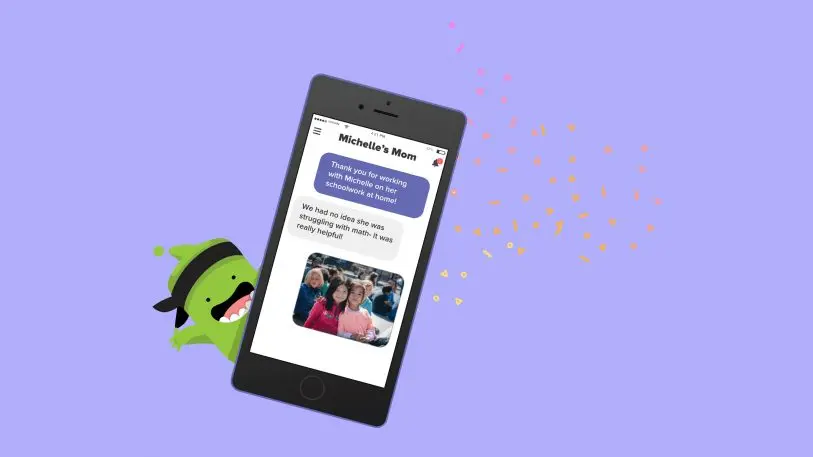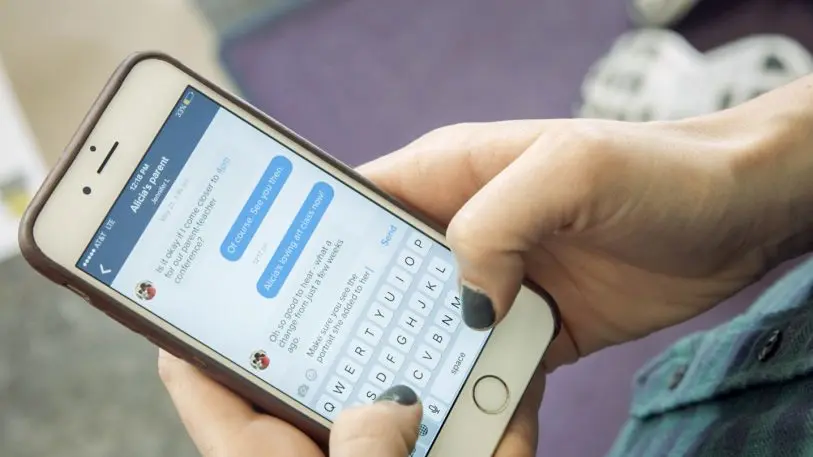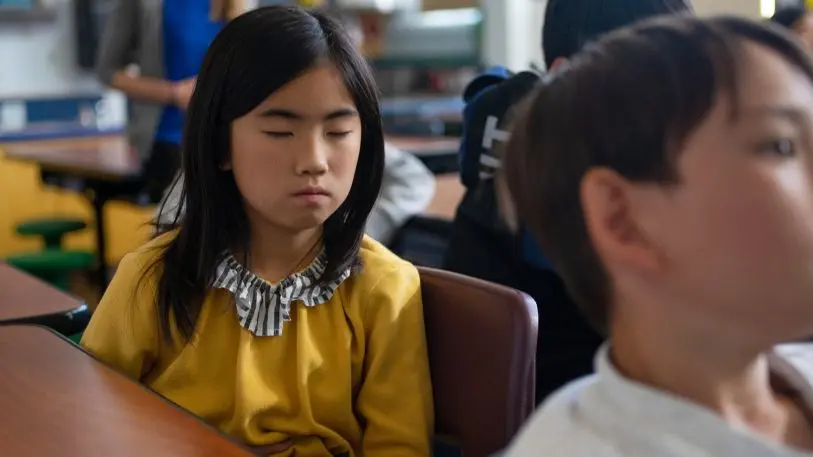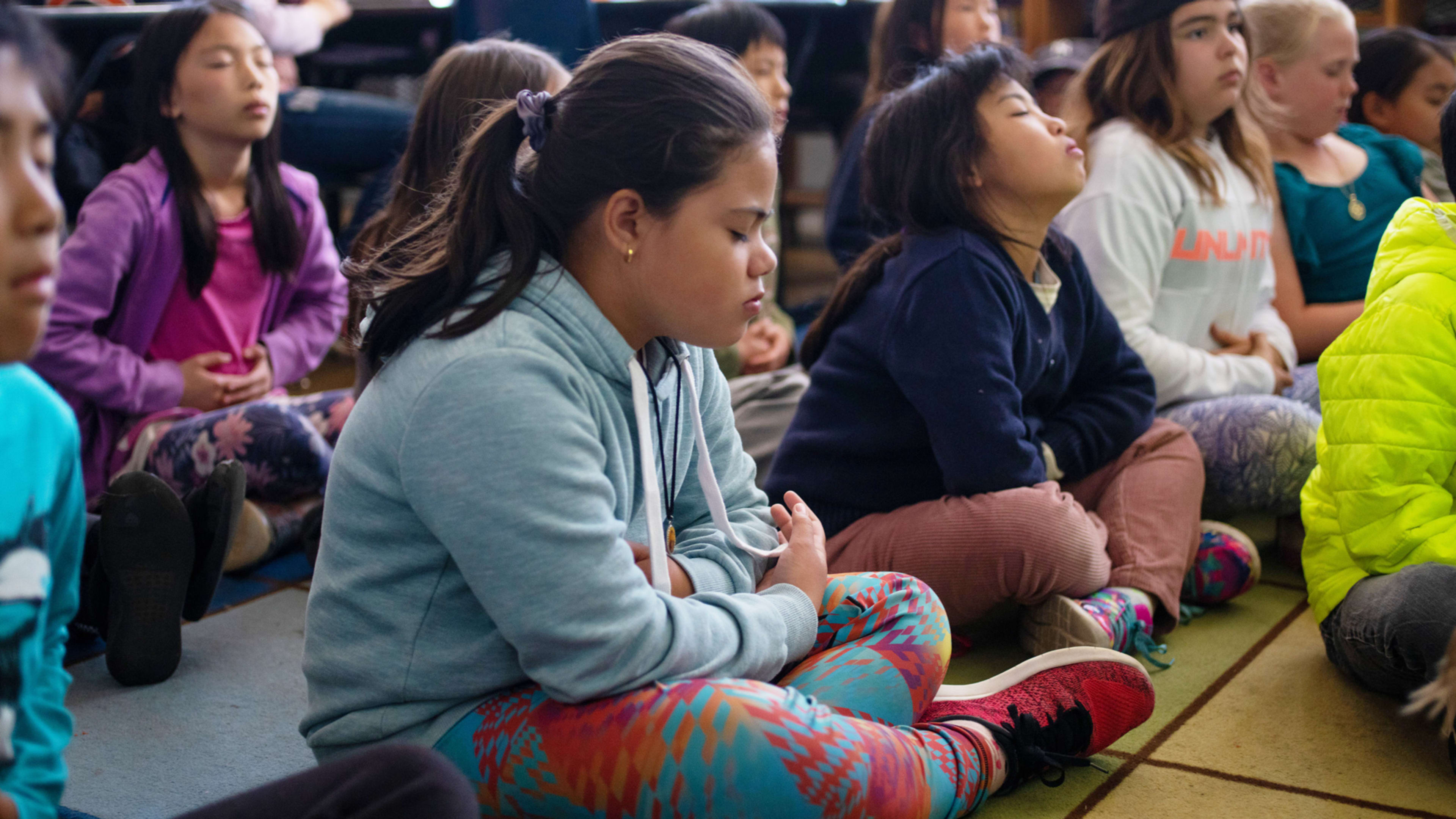In our smartphone-centric and distraction-prone society, the simple act of sitting quietly in a chair to focus only your breathing might seem novel, but it can have real benefits: If you can keep your feet flat, hands in your lap, and focus only on inhaling and exhaling through your nose, you should begin to feel more calm and present in your body. That’s one simple mindfulness technique, one of many associated with reduced stress and anxiety, and positive health benefits.
Mindfulness is having a moment among adults, as apps to guide your meditation proliferate and companies like Google, Intel, and even Target teaching their employees simple meditation techniques, in the hopes of helping them regain a sense of perspective, positivity, and ultimately control over their busy lives. But there are lots of ways that mindfulness exercises could help even younger users as well. Elementary school students who are having a tough day and acting out, for instance, could be given the chance to breathe deeply and refocus. Others who have pretest anxiety could do the same thing to help relax and feel less stressed.

Obviously, teaching children how to recognize and regulate their emotions might have a massive developmental payoff. The problem is that while over 90% of both teachers and parents believe such skills are important, only 10% of parents have kids enrolled at schools that help coach them, according to a survey of 1,000 families and 900 teachers by the free communication app company ClassDojo.
Class Dojo allows teachers to share customized updates of what’s happening in class with each student’s parents. Teachers create individual profiles (each kid receives one of ClassDojo’s upbeat monster icons) and award points based on positive or negative behaviors, say being “on task” and “helping others” versus “disrespect” and “no homework.” They can also chart those trends over time and share photos or videos of different activities, along with direct messages to parents when needed. The company claims to provide services in 180 countries including 95% of kindergarten through eighth grade schools in America. It commissioned the survey after hearing from some teachers and parents that these skills could be helpful. Based on the results, the company then decided to create its own mindfulness lessons.

On May 10, ClassDojo will ask every elementary school teacher on its platform to lead classes in a “Mindful Moment” or short, guided meditation. The exercise is largely automated–ClassDojo has a video that educators can play to share more about the purposed and how to practice mindfulness. (There are scripted and audio-only variations for teachers who want to get more involved.) The kickoff leads into a weeklong series on mindfulness that’s structured similarly, with one guided 15-minute lesson each day covering different aspects of the practice of being purposefully still and contemplative. It was developed in tandem with Marc Brackett, the founding director of the Yale Center for Emotional Intelligence, and a professor at the school’s Child Study Center.
“The vision of the company is, in the end, to give every child on earth an education they love,” says cofounder and CEO Sam Chaudhary. “The first thing we started doing was building these little communities, and they’re super important. The second step was ensuring every one of those communities has access to the kinds of ideas that would help them improve the educational experience with their kids.”

With mindfulness, one of the benefits to starting early is that teachers may be able to instill some lifelong lessons. “We see mindfulness as a strong component of building one’s emotional intelligence, as well as a key strategy in helping us just manage our everyday lives,” says Brackett. That can work for both students and teachers as well. Brackett cites research that shows how roughly 75% of high schoolers report experiencing negative emotions in school (being tired, bored, or stressed), while about 80% of teachers feel similarly (in their case, it’s more frustrated and overwhelmed).
“The question is how much training do we give our youth and the adults who are raising and teaching them in being still and allowing the mind to settle,” he adds. “That’s what this work is all about, just giving people the opportunity to pause, to breathe, and to allow their cortisol levels to drop, to allow their heart rate to drop, and to allow their racing brain to just settle so that they can be more present.” Doing so has been correlated with reduced anxiety, building optimism, having better quality relationships, and dealing with burnout.

https://youtu.be/UInZB8bSJTo
For example, during the Mindful Moment lesson, one of ClassDojo’s iconic monster mascots is seen sitting quietly in a chair, while some slow, melodic elevator music plays in the background. Off screen, a cheery male British narrator asks those listening to close their eyes while he rings a bell. The monster mimics theses cues. The idea, he explains, is to practice listening to not just the initial ding, but for as long as you can while the reverberates continue on. The sound may be dissipating, but it sticks around for several seconds. There are also discussion prompts: “Think about how long you could hear the bell,” he says. “What did you notice?”
Next comes some thoughts about how we all breathe involuntarily. “Your body breathes without you having to think about it . . . What makes it mindful?” And an explanation that you can take deep breathes when overwhelmed, as the monster–it can apparently shape shift–transforms itself into a rough ship on a rocky sea to represent piloting yourself through swirly emotions.
“The great thing about mindfulness is that it’s not complicated,” says Brackett. “It’s not like you have to sit on a cushion in Nepal for three hours to benefit from this. . . . It’s just tied to sitting still, and there are different ways of practicing these skills.” For Chaudhary, the hope is these lessons can inspire parents and schools to continue encouraging the ideal in their own ways. “We’re serious about this notion of helping every student get an education they love,” he says. “It’s important to note that’s a really holistic thing.”
Recognize your brand’s excellence by applying to this year’s Brands That Matter Awards before the early-rate deadline, May 3.
